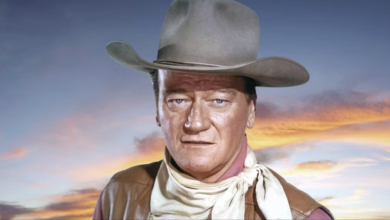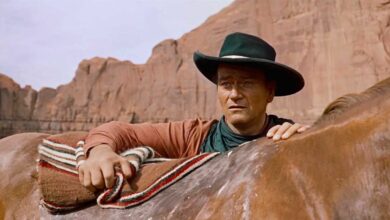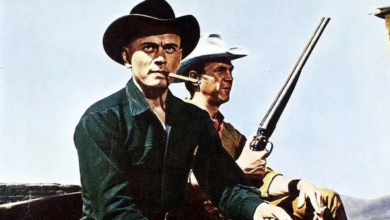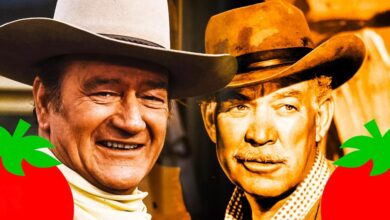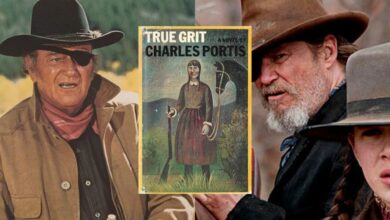In The Cowboys, Nobody Wants to Work (For John Wayne)
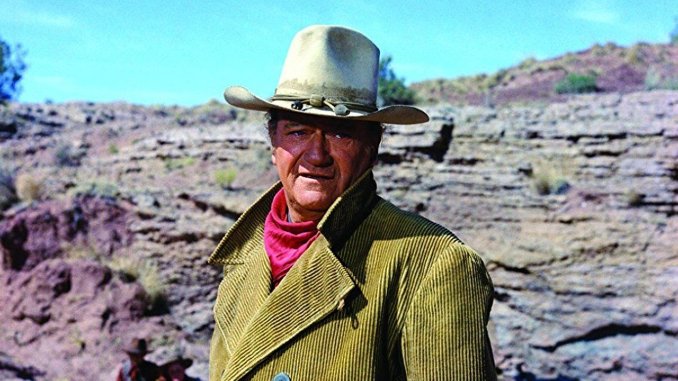
It’s not exactly true that the Western ever died. People are still making movies with Stetsons and Peacemakers, still robbing trains or waiting for the soundtrack to tell them when it’s okay to draw. If you want to watch those movies, they’re available and just look completely different: They may center actors of a different race than the usual Hollywood Western (The Harder They Fall, Django Unchained), or center a female perspective rather than a male one (Jane Got A Gun, The Nightingale), or play the genre for laughs (The Sisters Brothers, A Million Ways To Die in the West). It helps if you have the Coen brothers interested in making it (the quite good True Grit remake or their bizarre The Ballad of Buster Scruggs).
The “oater”—the straightforward, cow-punching movie about a bygone era where the West meant freedom for white dudes and we’re totally fine with that—has become a thing of the past as far as major studios are concerned. And by 1972, it must have seemed that way to a guy like John Wayne, the actor who represented everything about the Western that the genre has discarded. Clint Eastwood, who by then was world famous as the smoking, poncho-wearing Man With No Name, said he once received a letter from Wayne in reference to the 1973 film High Plains Drifter, in which Eastwood said Wayne told him he didn’t like it and that it wasn’t about the people who really pioneered the West. As Eastwood recalled, he realized Wayne was of a different generation and would not have understood that a movie like High Plains Drifter was more of a fable.
When you put 1972’s The Cowboys into context with a movie like High Plains Drifter—when you consider it came out two years after El Topo, or three years after Once Upon A Time in the West and The Wild Bunch, or nearly a decade after Sergio Leone and Eastwood’s trilogy of films first came out in Europe—you have to believe part of the motivation for making it was stubbornness on somebody’s part.
This is a Western about men who are men, and boys who must become men or die (one of them does actually die). It is a Western in which the trail is hard and the pay is shit, but you’re only a real man if you can take it. It is a Western in which the sympathetic white characters call the sympathetic Black character the N-word with a hard R, but the movie tells us they aren’t as racist about it as the real bad guys. It is a movie that features Robert Carradine and A Martinez as child actors, and Bruce Dern having an honest to goodness bloody fistfight with John Wayne. I kind of love it and never want it to change.
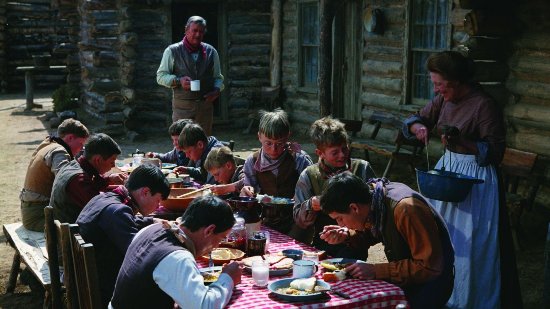
Nightlinger: Doesn’t anything larger want to work for you?
Andersen: We had a case of the gold fever around here. They’re all that’s left.
It’s some time after the Civil War and some time before the government declared the American frontier settled in 1910, and Wil Andersen (Wayne) is in trouble. He has several hundred head of cattle that need to get 400 miles to market, and he’s short of hired hands. The ones currently working for him want to go pan for gold, lured by the possibility of a job that could potentially pay more and presumably feature Andersen barking at them less. When they ask to go check it out and then come back if they find a better deal, he tells them to blow off and never come back. Why, he laments, does nobody want to work anymore?
When the job market is poor, there are any number of things employers might do to entice potential hires. Raising wages is a popular one, as is offering things like referral bonuses for current employees or sign-on bonuses for new hires. Alternately, you could just hire minors, who don’t complain as much. Andersen is reticent when a friend suggests that to him, and even more so when he visits the local one-room schoolhouse to take a look at his new hires. The teacher lets him in without complaint—this being, as she literally puts it, a man’s world. If an employer needs to come recruit at your school, you should give him the room.
(Does he need to talk to any of the girls, asks the teacher? No, Wayne says, he hasn’t got anything to say to girls.)
Andersen can’t resist the kids’ collective moxie, so he hires on his young charges, as well as a wandering cook, Jebediah Nightlinger (the inimitable Roscoe Lee Browne, who is the best actor in every scene he’s in). Nightlinger is Black, and the boys have somehow never seen a Black man before. He’s bafflingly accommodating of their ignorance about his anatomy.
As they hit the trail, Andersen also takes under his wing the wild child Cimarron (Martinez, ready to cuss and drink and fight) and runs into some other prospective workers that include Bruce Dern, as sleazy as he’s looked in anything he’s made in the half-century since. Dern and his fellows are former convicts, and Wayne looks like maybe he’s going to hire them, except that Dern lied about it. Having failed his background check, Dern slinks off, to return later in the film.

By this point, the boys have learned the ropes and broken themselves in on the trail. We’ve watched their camaraderie, watched them learn things, and actually seen some shots that seem as if the young actors really are ridin’ and ropin’. One of them dies suddenly and tragically on the job—it’s the one time everybody is allowed a moment of silent reflection. The rest of the time, tough love is the order of the day: One kid with a stutter has a tough time informing Wayne that Robert Carradine has fallen into a river. Wayne helps him get over his stutter by making the kid swear at him a whole bunch (and it works! The first time! Forevermore, he is cured of a speech impediment!).
It’s a lot of fun, these scenes of kids palling around with Wayne and Browne, learning things and making mistakes, and it seems like Wayne’s character will even soften to them by the end of the movie, perhaps come away changed by his encounter—a wiser, softer man. This is not what happens! At all!
When Bruce Dern returns with a huge posse of baddies, it is to capture Andersen’s herd and menace everybody at gunpoint. Andersen is too proud to just roll over, of course, so he and Bruce Dern bust each other’s lips. Dern loses the fistfight and in anger, shoots Andersen to death and leaves the boys in the wilderness. These kids murder the cattle rustlers with guns mere seconds before the bad guys lynch Nightlinger. They get the cattle to market, prove themselves as men, and then place a stone marker out on the prairie for Andersen, their adoptive father.
In case you didn’t know they were real men, the boys must deal with Dern, who lies before them broken beneath his horse, captive and not a threat to them at all after they, I am serious, blast holes through his entire posse. You think for a moment there will be some mercy for him. Readers, there is none.
This is the Old West. It’s a tragedy that this time, Andersen’s time, is over, but he’s raised the next generation of hard-ass bosses, the men who are going to think about their own hard-ass upbringing and reason that if it was good for them, it’s good for the next kid.
The Cowboys is a relic now and it was a relic when it came out, but what a relic it is. It is every gorgeous vista under an endless sky, every clenched jaw before a gunfight, every dry one-liner delivered by the Duke that you could possibly ask for, with actors who bridge the gap between the Hollywood of today and that of a bygone era. Please, John Wayne seems to be saying as Leone and Morricone and Clint and Jodorowsky circle the dark beyond the campfire, please let your babies grow up to be cowboys.

